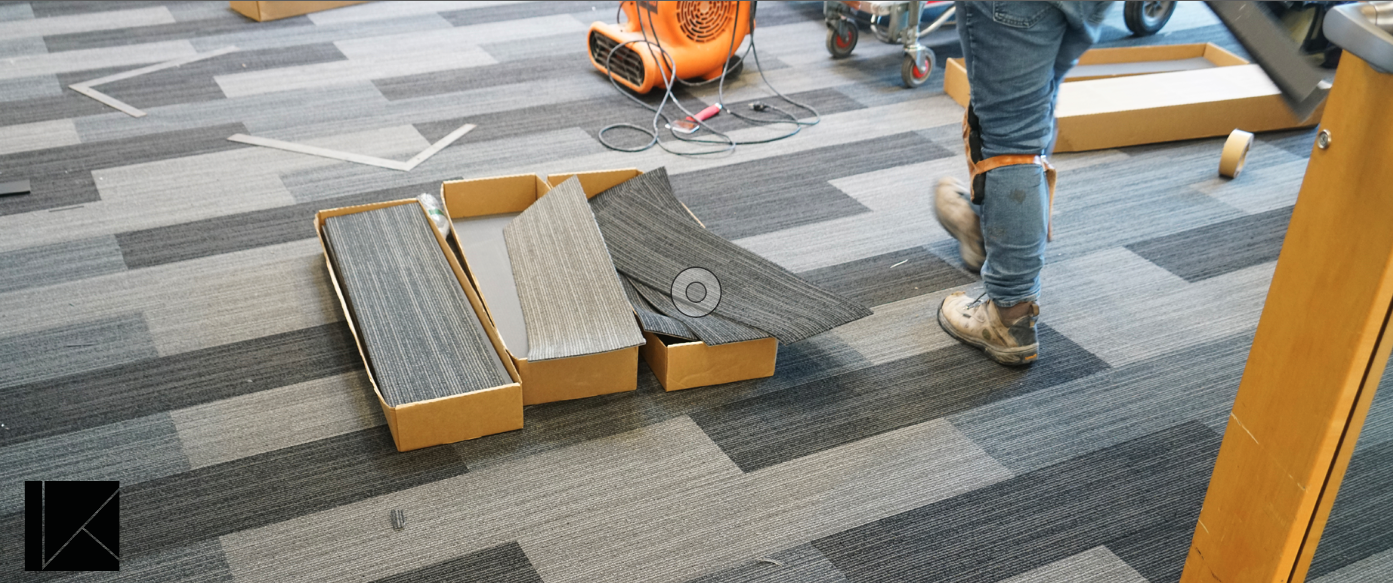
Research indicates that noise is becoming a significant problem in the workplace. According to one study, “63 percent of employees say they lack quiet space for focused work, which has a negative effect on their productivity, satisfaction and well-being.” It’s a shocking revelation, one that has serious repercussions (pun intended!), especially since little is being done to remedy workplace noise issues. Indeed, the same study found that “a mere 6% percent of executives report having equipped their office with noise mitigating features.” With little respite from noise distractions, employees are less productive, often irritable and “more likely to say they may leave their [positions] in the next six months.” The good news is that there are relatively easy solutions to correct office noise, one of the best of which is changing out the flooring. Broadloom carpet, in particular, is a great option for reducing noise. Here’s what you need to know about using broadloom carpet for noise control:
What is Broadloom Carpet?
Broadloom carpet is a tufted textile floor covering that is installed across the expanse of a room, from one wall to the other. Originally, it was handwoven on an extra large, traditionally-styled loom, but today broadloom carpet is most often mass-produced via a mechanical loom, usually in widths of 12 to 15 feet. Various materials can be used to make broadloom carpet, including wool, sisal and various synthetic fibers like polyester, nylon and olefin. The heavier, more tightly packed the fibers of the carpet, the more effective it will be at noise reduction.
Broadloom Carpet Absorbs Sound
Sound is a type of energy produced by the vibration of objects within a liquid (like water), solid (like the ground) or gas (like the air). The faster the vibration, the louder the sound. However, sound waves are impacted by the density of the medium in which they occur, so placing anything in the path of sound waves effectively slows the frequency of their vibration, reducing their amplitude and lessening their sound by the time they reach our ears. Carpets covering a large area have millions of fibers that absorb the energy of the sound waves instead of distributing them. Add a pad underneath the carpet and the vibrations decrease even more. The result: less sound wave movement and less unwanted sound (a.k.a. “noise”)!
Broadloom Carpet Reduces Floor Impact Noise
Furthermore, carpet helps reduce impact noise up over 20 decibels. The wide coverage offered by broadloom carpet helps insulate the force of impact made by footsteps, falling objects and the movement of chairs as they strike a floor, thus reducing the sound waves emitted with each impact and dampening the noise that each of those impacts make.
Broadloom Carpet Helps Control Reverberation
Finally, broadloom carpet inhibits the reverberation of sound waves. Reverberation occurs when sound waves bounce off objects in a medium rather than being absorbed by them. The repetition of these sound waves creates even more noise by the time they reach our ears. As mentioned, however, broadloom carpet absorbs sound rather than reflects it, thereby controlling unwanted sound reverberation.
The Key Interiors Advantage
Broadloom carpet is a great solution for controlling noise in many instances, but there are also other options available. To learn more about using interior and exterior office design to control noise in your office space, please contact our team at Key Interiors.